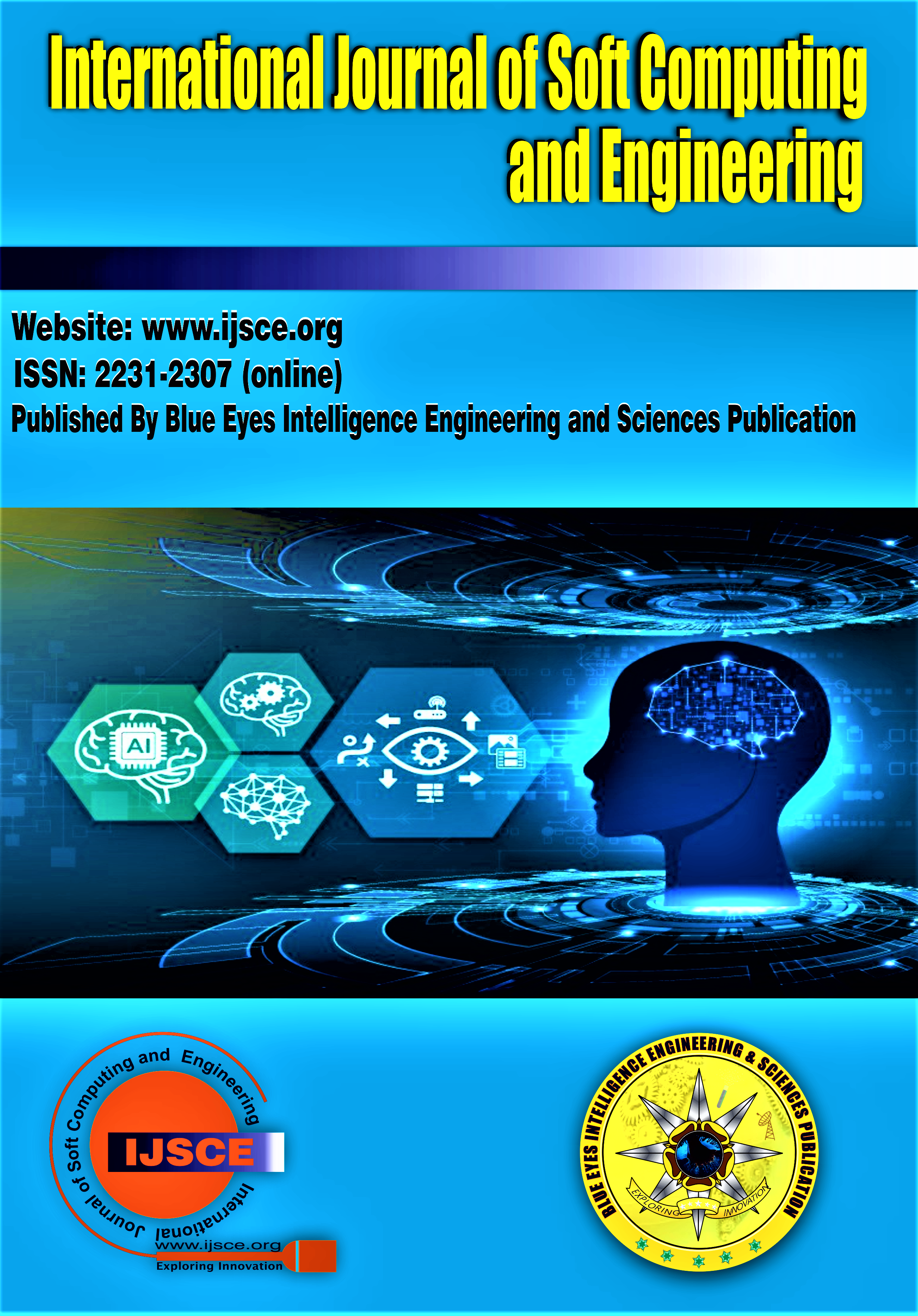Human Action Recognition using Long Short-Term Memory and Convolutional Neural Network Model
Main Article Content
Abstract
Human Action Recognition (HAR) is the difficulty of quickly identifying strenuous exercise performed by people. It is feasible to sample some measures of a body's tangential acceleration and speed using inertial sensors and exercise them only to learn model skills of incorrectly categorizing behavior into the relevant categories. In detecting human activities, the use of detectors in personal and portable devices has increased to better understand and anticipate human behavior. Many specialists are working toward developing a classification that can distinguish between a user's behavior and uncooked data while utilizing as few reserves as possible. A Long-term Recurrent Convolutional Network (LRCN) is proposed as a comprehensive human action recognition system based on deep neural networks in this paper.
Downloads
Article Details
Section

This work is licensed under a Creative Commons Attribution-NonCommercial-NoDerivatives 4.0 International License.
How to Cite
References
M. G. Morshed, T. Sultana, A. Alam, and Y. K. Lee, “Human Action Recognition: A Taxonomy-Based Survey, Updates, and Opportunities,” Sensors, vol. 23, no. 4. MDPI, Feb. 01, 2023. doi: 10.3390/s23042182. https://doi.org/10.3390/s23042182
T. O. Araoye, E. C. Ashigwuike, A. C. Adeyemi, S. V. Egoigwe, N. G. Ajah, and E. Eronu, “Reduction and control of harmonic on three-phase squirrel cage induction motors with voltage source inverter (VSI) using ANN-grasshopper optimization shunt active filters (ANN-GOSAF),” Sci Afr, vol. 21, Sep. 2023, doi: 10.1016/j.sciaf.2023.e 01785. https://doi.org/10.1016/j.sciaf.2023.e01785
K. D. Addo, F. Davis, Y. A. K. Fiagbe, and A. Andrews, “Machine learning for predictive modelling of the performance of automobile engine operating without coolant thermostat,” Sci Afr, vol. 21, Sep. 2023, doi: 10.1016/j.sciaf.2023.e 01802. https://doi.org/10.1016/j.sciaf.2023.e01802
P. Lara-Benítez, M. Carranza-García, and J. C. Riquelme, “An Experimental Review on Deep Learning Architectures for Time Series Forecasting,” Int J Neural Syst, vol. 31, no. 3, Mar. 2021, doi: 10.1142/S0129065721300011. https://doi.org/10.1142/S0129065721300011
E. C. Nwosu, G. N. Nwaji, C. Ononogbo, I. Ofong, N. V. Ogueke, and E. E. Anyanwu, “Effects of water thickness and glazing slope on the performance of a double-effect solar still,” Sci Afr, vol. 21, Sep. 2023, doi: 10.1016/j.sciaf.2023.e 01777. https://doi.org/10.1016/j.sciaf.2023.e01777
S. Chae, J. Shin, S. Kwon, S. Lee, S. Kang, and D. Lee, “PM10 and PM2.5 real-time prediction models using an interpolated convolutional neural network,” Sci Rep, vol. 11, no. 1, Dec. 2021, doi: 10.1038/s41598-021-91253-9. https://doi.org/10.1038/s41598-021-91253-9
H. W. Hounkpatin, H. E. V. Donnou, K. V. Chegnimonhan, G. H. Hounguè, and B. B. Kounouhewa, “Thermal characterisation of insulation panels based on vegetable typha domengensis and starch,” Sci Afr, vol. 21, Sep. 2023, doi: 10.1016/j.sciaf.2023.e 01786. https://doi.org/10.1016/j.sciaf.2023.e01786
S. Ghimire, Z. M. Yaseen, A. A. Farooque, R. C. Deo, J. Zhang, and X. Tao, “Streamflow prediction using an integrated methodology based on convolutional neural network and long short-term memory networks,” Sci Rep, vol. 11, no. 1, Dec. 2021, doi: 10.1038/s41598-021-96751-4. https://doi.org/10.1038/s41598-021-96751-4
H. A. Mupambwa et al., “A 2-year study on the spatio-temporal changes in trace metal concentrations in sediment, water and plants within the Walvis Bay Lagoon, Namibia,” Sci Afr, vol. 21, Sep. 2023, doi: 10.1016/j.sciaf.2023.e01787. https://doi.org/10.1016/j.sciaf.2023.e01787
J. Donahue et al., “Long-term Recurrent Convolutional Networks for Visual Recognition and Description,” Nov. 2014, [Online]. Available: http://arxiv.org/abs/1411.4389 https://doi.org/10.21236/ADA623249
O. G. Famutimi, I. O. Adewale, and K. R. Adegoke, “Inhibition characteristics of peptide extracts of four medicinal plants on activities of bovine trypsin,” Sci Afr, vol. 21, Sep. 2023, doi: 10.1016/j.sciaf.2023.e01795. https://doi.org/10.1016/j.sciaf.2023.e01795
M. Shreyas Pagare and D. Rakesh Kumar, “Survey on Human Action Recognition System, Challenges and Applications,” 2023.
M. O. Mario, “Human activity recognition based on single sensor square HV acceleration images and convolutional neural networks,” IEEE Sens J, vol. 19, no. 4, pp. 1487–1498, Feb. 2019, doi: 10.1109/JSEN.2018.2882943. https://doi.org/10.1109/JSEN.2018.2882943
G. Theses and J. Pang, “Scholar Commons Human Activity Recognition Based on Transfer Learning,” 2018. [Online]. Available: https://scholarcommons.usf.edu/etd
T. N. Sainath, O. Vinyals, A. Senior, and H. H. Sak, “Convolutional, Long Short-Term Memory, Fully Connected Deep Neural Networks.”
S. Gopali, F. Abri, S. Siami-Namini, and A. S. Namin, “A Comparative Study of Detecting Anomalies in Time Series Data Using LSTM and TCN Models,” Dec. 2021, [Online]. Available: http://arxiv.org/abs/2112.09293
Y. Kim, Y. Jernite, D. Sontag, and A. M. Rush, “Character-Aware Neural Language Models,” Aug. 2015, [Online]. Available: http://arxiv.org/abs/1508.06615
O. Vinyals, A. Toshev, S. Bengio, and D. Erhan, “Show and Tell: A Neural Image Caption Generator,” Nov. 2014, [Online]. Available: http://arxiv.org/abs/1411.4555
X. Shi, Z. Chen, H. Wang, D.-Y. Yeung, W. Wong, and W. Woo, “Convolutional LSTM Network: A Machine Learning Approach for Precipitation Nowcasting,” Jun. 2015, [Online]. Available: http://arxiv.org/abs/1506.04214
Aralimarad, M., S. M., Dr. M., & Mallapur, Dr. J. D. (2020). A Comprehensive Survey on Human Action Recognition. In International Journal of Recent Technology and Engineering (IJRTE) (Vol. 9, Issue 2, pp. 902–908). https://doi.org/10.35940/ijrte.b3933.079220
Jahagirdar, A., & Nagmode, M. (2019). Human Action Recognition using Scaled Convolutional Neural Network. In International Journal of Engineering and Advanced Technology (Vol. 9, Issue 1, pp. 1820–1826). https://doi.org/10.35940/ijeat.a1440.109119
Magapu, H., Krishna Sai, M. R., & Goteti, B. (2024). Human Deep Neural Networks with Artificial Intelligence and Mathematical Formulas. In International Journal of Emerging Science and Engineering (Vol. 12, Issue 4, pp. 1–2). https://doi.org/10.35940/ijese.c9803.12040324
Panicker, M. J., Upadhayay, V., Sethi, G., & Mathur, V. (2021). Image Caption Generator. In International Journal of Innovative Technology and Exploring Engineering (Vol. 10, Issue 3, pp. 87–92). https://doi.org/10.35940/ijitee.c8383.0110321
Das, S., S, S., M, A., & Jayaram, S. (2021). Deep Learning Convolutional Neural Network for Defect Identification and Classification in Woven Fabric. In Indian Journal of Artificial Intelligence and Neural Networking (Vol. 1, Issue 2, pp. 9–13). https://doi.org/10.54105/ijainn.b1011.041221





